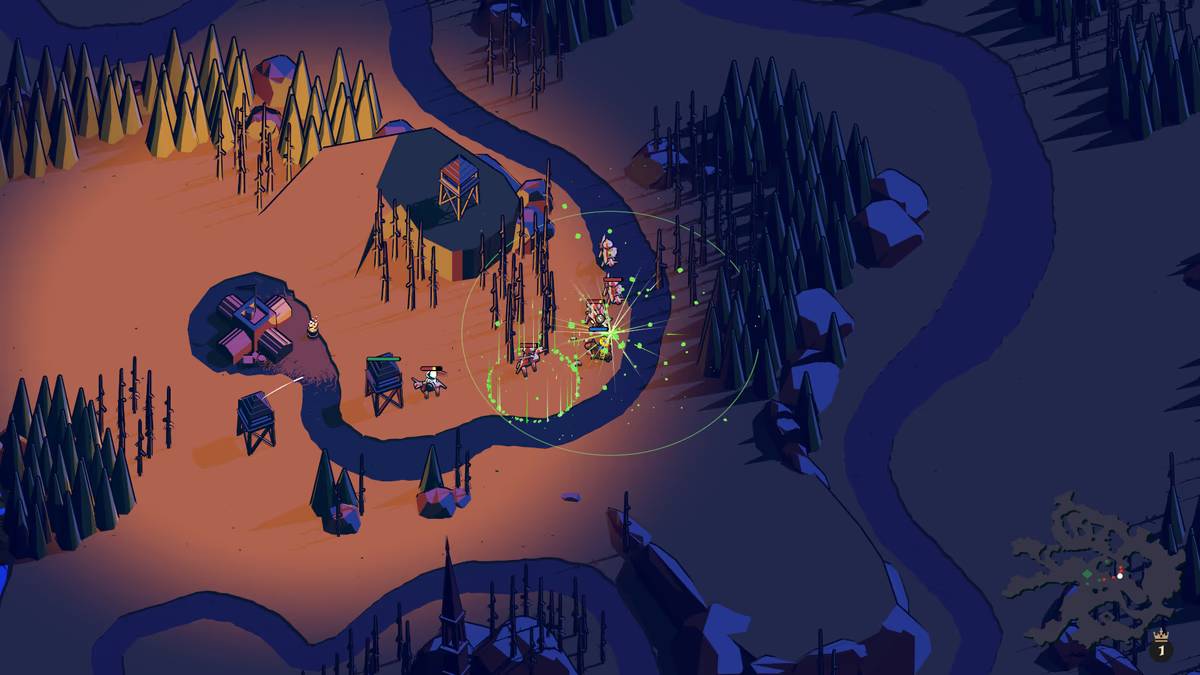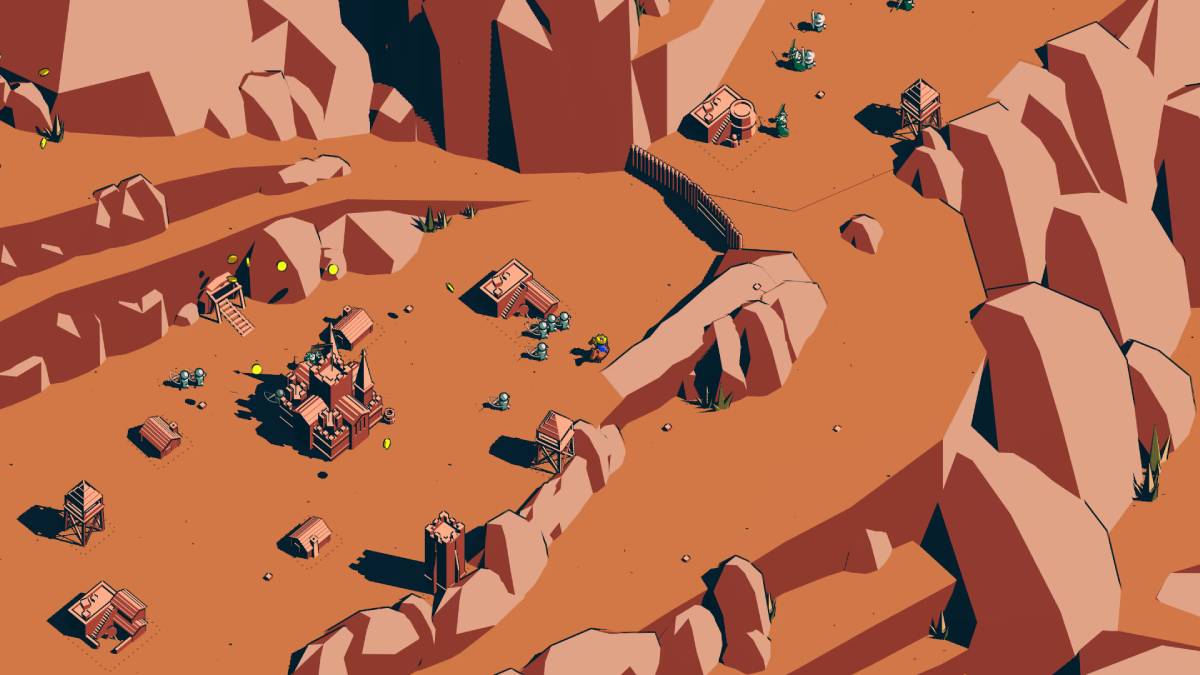A strategy game or RTS that involves building up a town and its facilities while also dealing with enemy onslaughts can sometimes end up being a lot. Civilization entries can take up weeks of your life. The same goes for Total War, Stronghold, or Warcraft entries. Thronefall feels perfectly designed to capitalize on the dopamine boost that comes from correct strategic decisions, while also eliminating or streamlining certain gameplay elements to ensure we get an RTS that is still challenging, but doesn’t involve massive commitments.
In each of the regions in Thronefall that you unlock, you play a monarch who is establishing a kingdom. You start with a central castle, which can be expanded upon if you have enough gold to ensure additional perks. Each day, you determine how to use the gold currently in your treasury. Do you build barracks for different types of warriors? Will you construct walls around your growing kingdom? Should you focus on building homes and farmland to provide additional ways to earn money beyond defeating the waves of enemies that attack each night? Would constructing towers with archers be a wise idea? Then, when night falls, you head out to face the invaders with your monarch and any units available from barracks to defeat those forces so they don’t topple your castle and ruin your new empire.

The concept behind Thronefall sounds simple, and it is, but it doesn’t make things easy or boring. Rather, it lets you more efficiently plan things out and cut through a swathe of enemy forces. For example, your first task upon founding a new kingdom may be to purchase some homes to provide income. After getting through the first night and facing enemies, you may invest in a tower with archers that will shoot at enemies from a distance and a wall. When you survive another night, you might decide to buy some fields or barracks. After another assault is thwarted, you might want to upgrade the fields so they’ll explode if enemies walk over them, upgrade some of the homes, or choose an upgrade path for the towers that prioritizes either range or rate of fire. It’s simple. It’s effective. You always have the information you need and each decision could be the right one depending on your approach.
That beautiful simplicity applies to the enemy encounters as well. Before each evening, you can see on the map where foes will appear. You’ll also see an icon that lets you know if they’re melee units, ranged attackers, or flying foes. This allows you to adjust your approach. So if your current location’s kingdom has three sides open to attack and you see that all of the enemies will come from the northeast that turn, maybe build the wall facing that direction? If you don’t immediately upgrade your barracks or towers, you can use information about current and upcoming waves to inform future progression decisions.
Even the more active approaches to fighting work well and are extremely fun in Thronefall, making the RTS feel both like a strategy game with a lot of finesse and a hack-and-slash. You can easily pull units created by barracks along with you and place them with the press of a button. An upgrade path option even allows them to attack while they’re following you, should you select it. Your own monarch can dash if they are at full health, constantly unleashes passive attacks, and can perform an aggressive action with a cooldown. If you die, it’s no big deal. You’ll revive again a few seconds later.
All this happens without any distractions as well. The visual design in Thronefall is exceptional, with all allies, enemies, notable buildings, and UI elements in the strategy game clearly constructed so you waste no time in the thick of the RTS’ fights. The colors stand out perfectly. Building designs are immediately recognizable, as are upgrades. Enemies are pretty easily identifiable. Also, I loved how you can see icons that show your units’ specialties when you select them to move them, and that the enemy icons before the evening phase show how many of each type will appear. It’s the little things!

While Thronefall is a pretty substantial game and I do wish there were even more levels because it is so good, what is there makes it possible to keep returning. After beating areas, you earn new weapons, perks, and mutators that allow you to influence future play sessions and runs. The weapons are interesting, as each offers a passive attack and an active skill with a cooldown that can change up your approach. The perks are appreciated, since it can force you to tailor your strategies to new approaches, and us being limited to five keeps us from becoming overpowered. But the mutators can be the most fun of all, and they can make a situation substantially more challenging.
However, there is also the endless mode, so I can’t really complain too much about the game eventually ending! By the way, that mode is incredible. It essentially becomes a roguelike here, where you select your loadout for each stage. This determines the area, your weapon, and two perks. You always keep your perks, though the weapon changes. The random nature of it is so inviting, and I loved seeing how long I could survive as the challenge kept increasing.

Thronefall is an absolutely wonderful RTS game from Grizzly Games that pulls ideas from past strategy and tower defense titles, then executes them in a stylish, minimalistic manner. There are no overwhelming choices. Upgrade trees make sense. Stages are broken up into digestible chunks. The only downside is perhaps that there isn’t more of it, but at least we can replay the areas that are there on higher difficulties later.
Thronefall is available on the Nintendo Switch and PC.
A minimalist game about building and defending your little kingdom. Switch version reviewed. Review copy provided by company for testing purposes.
Thronefall is an absolutely wonderful RTS game from Grizzly Games that pulls ideas from past strategy and tower defense titles, then executes them in a stylish, minimalistic manner.


Published: Oct 22, 2024 03:00 pm